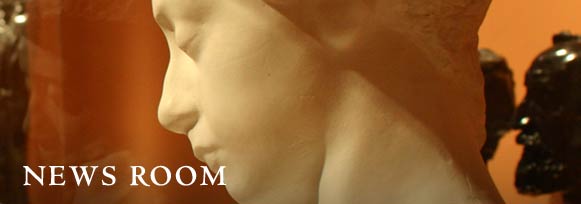Exhibition Presents 75 Years of Revolutionary Poster Art
"Revolutionary Tides: The Art of the Political Poster 1914–1989"
September 14, 2005–January 1, 2006 at CantorArts Center, Stanford University
February 24–June 25, 2006 at The Wolfsonian-FIU, Miami Beach
Stanford, California—The Cantor Arts Center at Stanford University announces a major exhibition that examines the key role played by crowds in modern politics and society from World War I to the fall of the Berlin Wall. On view September 14, 2005–January 1, 2006, Revolutionary Tides: The Art of the Political Poster, 1914–1989 focuses on the turbulent years of the first half of the 20th century, bringing together more than 100 of the most exceptional examples from the vast poster collections of the Hoover Institution at Stanford and The Wolfsonian–Florida International University in Miami Beach. Revolutionary Tides presents posters from such diverse settings as New Deal America, the Soviet Union of Stalin’s Five-Year Plans, China's Cultural Revolution, the protest movements of the 1960s, and Ayatollah Khomeni’s Iran. The exhibition features work by world renowned graphic artists such as John Heartfield, Gustav Klutsis, and Xanti Schawinsky and includes art ranging from an illustration depicting "Freedom of Speech" by Norman Rockwell to silkscreened portraits of communist leader Mao Tse-Tung by Andy Warhol. Posters, a distinctly modern medium of mass communication and persuasion, served as a laboratory for the development of graphic conventions for depicting the masses as political actors. The emergence of a politics founded upon principles of popular sovereignty shaped new images of the masses as a collective force. At the same time, the new art practice of the popular poster shaped the emerging politics and cast artists in the role of mass communicators. The exhibition is organized into three broad areas—Figures, Numbers, and Symbols—each of which surveys a particular graphic convention, iconographic element, or theme. "Figures" analyzes the graphic vernacular of 20th-century political poster art, such as the presentation of crowds arrayed as fronts or geometrical figures and their abstraction into seas or decorative patterns. "Numbers" emphasizes the intimate ties between modern notions of political power and ideas of quantity, including statistical data, industrial production, and large-scale construction and destruction. "Symbols" is devoted to examining the interaction between the image of the crowd and icons representing the group, such as party emblems, faces of leaders, or exemplary men or women from the masses. Jeffrey T. Schnapp, director of the Stanford Humanities Lab and author/editor of 15 books and more than 100 essays, is the guest curator for the exhibition. The exhibition is accompanied by a catalogue entitled Revolutionary Tides, published by Skira. The exhibition is an outgrowth of the Crowds project, which is a multi-author hybrid project that includes a Web site and book (Stanford University Press, 2006). Crowds weaves together scholarly essays on topics extending from crowds in antiquity to contemporary "smart mobs," with testimonials, semantic histories, and reference materials on crowd psychology and crowd sociology. The Crowds project is the product of a new approach to humanities scholarship, as embodied by the Stanford Humanities Lab: the intertwining of an exhibition and a large scale research project centrally involving students and faculty. Revolutionary Tides was organized by the Cantor Arts Center with the Hoover Institution at Stanford University, the Stanford Humanities Lab, and The Wolfsonian-Florida International University. The Cantor Arts Center gratefully acknowledges generous support for this project from the Clumeck Endowment Fund, The Bernard Osher Foundation, The Seaver Institute, The Mariposa Fund, Roger and Martha Mertz, and Cantor Arts Center members. After the exhibition's presentation at Stanford, Revolutionary Tides will travel to The Wolfsonian–FIU, Miami Beach, where it will be on view February 24 – June 25, 2006.
|



